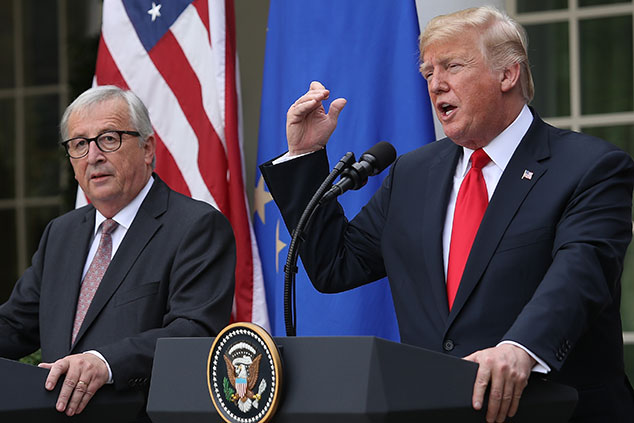
The success of the deal “is yet to be seen”, says Springford. After all, “it’s not an agreement in itself, just an agreement to start talking about talks”. It may have prevented Trump from escalating tariffs, but there are “lots of reasons why it could go wrong”: Trump hasn’t ruled out following through on his threat to impose additional tariffs on European cars; and many European countries, especially France, are unenthusiastic about the wider deal that Juncker and Trump hinted at. All in all, things “are still very shaky”.
Some optimists are arguing that the deal could lead to the Transatlantic Trade and Investment Partnership (TTIP), being resurrected, but it’s far more likely that the ultimate result will be a simple free trade agreement that removes tariffs on industrial goods. France is opposed to any attempt to remove restrictions on agriculture, while the US is unlikely to open up its public procurement process. Similarly, it’s unlikely that we’ll see any meaningful reductions in non-tariff barriers. The difference in regulatory philosophy between Europe and the United States are too different. Even if we do get an agreement it will take around 3-5 years to negotiate.
So, will there be any winners from these talks, especially given that American and European tariffs are already quite low?
Winners and losers from a trade war
Springford is a political analyst, not an investment adviser, so he wasn’t able to give us any specific advice, but if his analysis is correct, it might be worth looking at the US car manufacturers – Trump’s decision to impose tariffs on steel and aluminium hurt them by pushing up the cost of key raw materials. So if the apparent détente between Brussels and Washington does lead to Trump revoking them, it could boost their margins.
Springford also thinks that the deal is also positive in that it shows that “Trump finds it difficult to act when the Republican Party and his businessman friends go against him”. While the Republicans “haven’t exactly stuck their necks out on the issue of trade, there have certainly been grumbles at his protectionist leanings”. On the other hand, it might just be that Trump “will re-focus his ire away from Europe and towards China” – rather than change his attitudes to trade more generally. This is good news for European firms, but bad news for Asian companies and those who have their production facilities in the Far East.
The perception that Brussels has successfully faced Trump down marginally strengthens the hand of those who want Britain to remain in the customs union after Brexit. Still, the most likely outcome of the Brexit negotiations is that Britain and Europe agree a “fudged political declaration” which Theresa May could use to claim that she has got something similar to the Chequers deal. This would enable both sides to avoid a no-deal Brexit (the chances of which Springford puts at only 10%) and allow Britain to benefit from a transition period.
However, this would only buy both sides another 18 months. After that, they would need to start transforming such a general and non-binding declaration into a proper exit agreement. With both sides still at loggerheads on a variety of issues, “all bets are off” with everything from a simple free trade agreement to a Norwegian style agreement still on the table. In fact, because both Parliament and the parties are still divided on Europe, Springford “wouldn’t be surprised” if there wasn’t another election next year to finally achieve a national consensus.